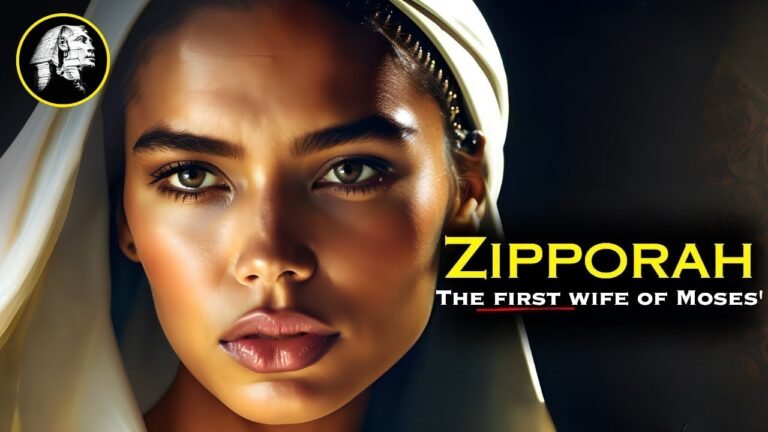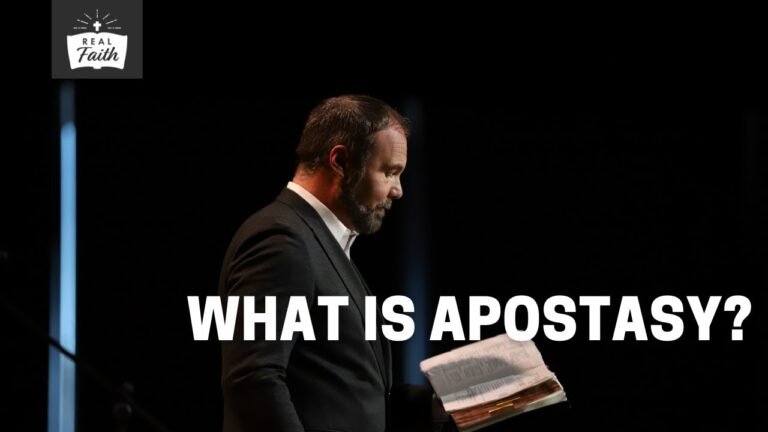The Significance of Moses’ Wife: Exploring Her Identity and Impact
In the rich tapestry of biblical narratives, the name of Moses’ wife often sparks curiosity and intrigue. While the Bible primarily focuses on Moses’ leadership and the Exodus story, his marriage offers a glimpse into his personal life and the cultural dynamics of his time. Zipporah, a Midianite woman, not only played a significant role in supporting Moses but also symbolizes the intersection of different cultures and faiths in ancient history. Exploring her story reveals deeper insights into the challenges and contributions of women in biblical accounts, making it a compelling topic for those seeking to understand the complexities of these legendary figures.
How many wives did Moses have in total?
Moses is traditionally recognized as having two wives, according to some interpretations of biblical texts. His first wife, Zipporah, the daughter of Jethro, was a key companion during his journey from Midian to Egypt, providing support and contributing to the narrative of his leadership. Zipporah’s character highlights the importance of familial ties and the challenges faced by Moses as he fulfilled his divine mission.
The second wife, often referred to as the Cushite woman, adds another layer of complexity to Moses’ life. This figure, believed to be from Nubia, is mentioned in the Bible but remains enigmatic, with little detail about her identity or her role in Moses’ story. Together, these two women represent different aspects of Moses’ life, enriching the narrative with themes of love, loyalty, and the diverse cultural backdrop of his experiences.
What became of Moses’ first wife?
Moses’ first wife, Zipporah, played a significant role in his life during their time in Midian. As a daughter of Jethro, the priest of Midian, she married Moses and bore him two sons. However, before the pivotal Exodus from Egypt, Moses made the difficult decision to send Zipporah and their children away, likely to ensure their safety while he undertook the monumental task of leading the Israelites out of bondage. This act set the stage for a complex narrative filled with questions and uncertainties.
Later in the story, Moses and Zipporah reunite, yet some suggest he may have taken a second wife, described as a “Cushite” or Ethiopian woman. This addition to his family raises intriguing questions about Moses’ relationships and the cultural dynamics at play during this tumultuous period. The mention of a Cushite wife has sparked discussions among scholars regarding the implications of ethnicity and identity in the biblical context, further complicating the narrative.
One particularly puzzling aspect of the tale is Zipporah’s involvement in the circumcision of their son. This act, performed by a woman, challenges traditional gender roles and highlights Zipporah’s significant role in Moses’ life and mission. The reasons behind her actions remain a mystery, prompting experts to delve deeper into the cultural and religious meanings behind this event. As scholars continue to explore these themes, the story of Moses and his wives remains a rich source of inquiry and interpretation.
What were the reasons for Zipporah leaving Moses?
Zipporah’s departure from Moses reflects a complex interplay of concern and duty during a tumultuous time. According to rabbinic interpretation, Moses made the difficult decision to send her back to her father’s home in Midian to protect her from the harsh realities of Egyptian servitude. This choice underscores his deep care for her well-being, prioritizing her safety over his own desires.
The backdrop of their separation is further complicated by the events following the Giving of the Torah. Moses, now tasked with guiding his people through a transformative journey, was bound by new restrictions that included a life of sexual abstinence. This change not only affected his personal life but also placed additional strain on their relationship, making it increasingly difficult for the couple to maintain their connection.
Ultimately, Zipporah’s departure serves as a poignant reminder of the sacrifices made in the name of leadership and faith. As Moses embraced his role as a prophet and leader, the distance created by Zipporah’s absence symbolizes the personal toll that profound responsibilities can take on family ties, illuminating the often unseen challenges faced by those in positions of power.
Unveiling the Hidden Role of Moses’ Wife
Moses’ wife, often overshadowed by her husband’s monumental legacy, plays a determinante yet understated role in the biblical narrative. As Zipporah, a Midianite woman, she embodies the bridge between different cultures and faiths, demonstrating how love and partnership can transcend boundaries. Her presence in Moses’ life not only humanizes the great leader but also highlights the importance of familial support in his journey to liberate the Israelites from slavery.
In a world where leaders are often seen as solitary figures, Zipporah’s contributions remind us of the vital influence that partners can have on one’s mission. Her swift actions during a pivotal moment in Moses’ life, when she circumcised their son to avert divine wrath, showcase her courage and decisiveness. This episode not only emphasizes her integral role in the narrative but also positions her as an unsung heroine, one whose bravery and quick thinking were essential in ensuring Moses could fulfill his destiny.
Furthermore, Zipporah’s experiences reflect the broader theme of identity and belonging in the biblical story. As a foreigner, she navigates the complexities of her husband’s world while maintaining her own cultural identity. This duality invites readers to consider the diverse backgrounds of those who played significant roles in shaping history. By recognizing Zipporah’s hidden contributions, we gain a fuller understanding of Moses’ journey and the interplay of personal relationships in the grand narrative of liberation and faith.
The Untold Story: A Woman Behind a Legend
Behind every legendary figure lies an untold story, often overshadowed by the greatness that they embody. In this case, the woman behind the legend is not merely a silent supporter but a pivotal force in shaping the narrative. Her intellect and unwavering resolve provided the foundation for their achievements, as she navigated the complexities of a world that often marginalized her contributions. With keen insight and an indomitable spirit, she turned obstacles into stepping stones, crafting a legacy that would eventually be recognized, yet often overlooked.
As time unfolds, her story emerges, revealing the depth of her influence and the sacrifices made in pursuit of excellence. This woman, with her quiet strength and relentless determination, inspired not just the legend but an entire generation. Her voice, though frequently silenced, resonates in the echoes of triumph that surround the figure she helped elevate. In acknowledging her role, we begin to unravel the layers of a narrative that deserves its own spotlight, reminding us that legends are rarely born in isolation, but rather forged through the unwavering support of those who believe in them.
Identity and Influence: The Legacy of Moses’ Spouse
Moses’ spouse, often overshadowed by her husband’s monumental role in biblical history, emerges as a figure of profound influence and strength. Zipporah, a Midianite woman, not only played a critical part in Moses’ personal life but also shaped his leadership through her unique perspective and cultural background. Her marriage to Moses symbolizes a bridge between diverse communities, highlighting the importance of unity and understanding in a world often divided by differences.
In the narrative of Exodus, Zipporah’s actions reflect her deep commitment to her family and her courage in challenging circumstances. When Moses faced a life-threatening situation, it was Zipporah who took decisive action, showcasing her resilience and resourcefulness. This moment not only underscores her pivotal role in safeguarding her husband but also highlights the often-unrecognized contributions of women in historical and religious narratives, where their voices have frequently been muted.
The legacy of Zipporah extends beyond her immediate contributions; she embodies the complexities of identity and the power of influence in shaping future generations. Her story resonates today as a reminder of the strength found in diversity and the vital roles women play in both familial and societal contexts. As we explore the lives of figures like Zipporah, we gain a deeper understanding of the intertwined nature of personal and collective identity, encouraging us to recognize and celebrate the multifaceted influences that shape our shared histories.
A Powerful Partner: Understanding Her Impact
In every successful endeavor, the influence of a strong partner can be transformative, shaping goals and enhancing outcomes. Her presence not only inspires creativity but also fosters resilience in the face of challenges. With a unique blend of empathy and strategic insight, she navigates complexities with grace, turning obstacles into opportunities for growth. This powerful partnership cultivates an environment where collaboration thrives, allowing for innovative solutions and shared victories. Understanding her impact is essential, as it illuminates the path to achieving collective aspirations and elevating both individual and joint success.
Beyond the Exodus: The Life of Moses’ Wife
Amidst the grand narrative of the Exodus, the life of Moses’ wife often remains in the shadows, yet she played a pivotal role in shaping the journey of her family and community. A Midianite woman named Zipporah, she brought cultural richness and strength to a household that would lead a nation. Her quick thinking and bravery were evident when she intervened to save Moses’ life, demonstrating her unwavering support in times of crisis. As the wife of a prophet and leader, she navigated the complexities of faith and identity, embodying resilience and devotion. Through her experiences, Zipporah not only influenced the trajectory of her husband’s mission but also represented the often-overlooked voices of women in biblical history, reminding us that their stories are integral to understanding the broader narrative of faith and liberation.
The identity of Moses’ wife, Zipporah, stands as a testament to the diverse cultural tapestry of the biblical narrative. Her story not only highlights the complexities of marriage across cultural boundaries but also emphasizes the strength and resilience of women in ancient times. By exploring her role, we gain deeper insights into the lives of those who shaped history, reminding us that their contributions deserve recognition and celebration in our understanding of the past.






